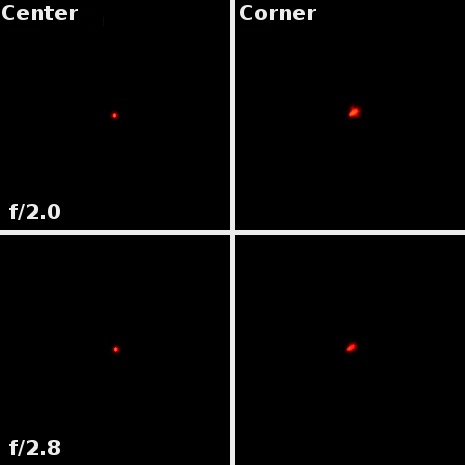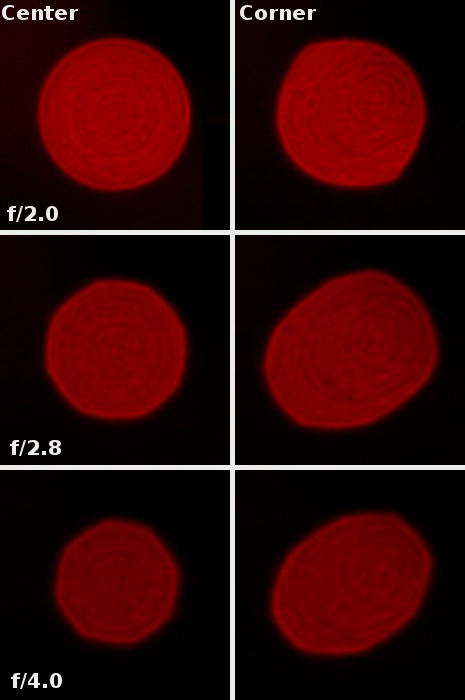Samyang 16 mm f/2.0 ED AS UMC CS
7. Coma, astigmatism and bokeh

The lens doesn’t have any astigmatism problems. An average difference between horizontal and vertical MTF50 values amounted to just 3% which we consider to be very low.
Please Support UsIf you enjoy our reviews and articles, and you want us to continue our work please, support our website by donating through PayPal. The funds are going to be used for paying our editorial team, renting servers, and equipping our testing studio; only that way we will be able to continue providing you interesting content for free. |
- - - - - - - - - - - - - - - - - - - - - - - - - - - - - - - - - - - - - - - - - - - - - - - -
We don’t have any reservations about defocused images either. It is true that in the circles you can notice the ‘onion’ structure but it remains delicate, without any local extremes. The edge of the circles also looks good – without any pronounced light or dark rims.







